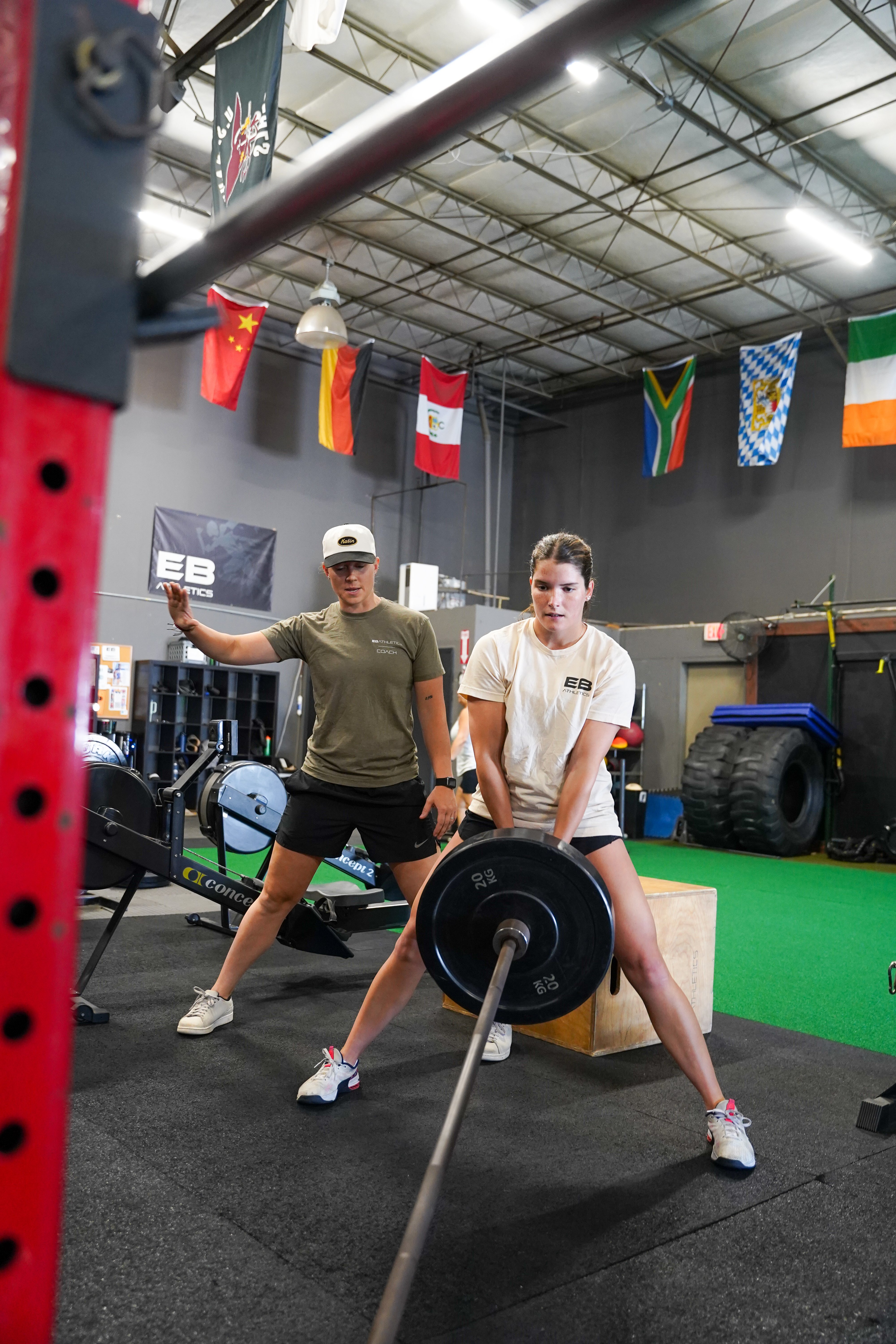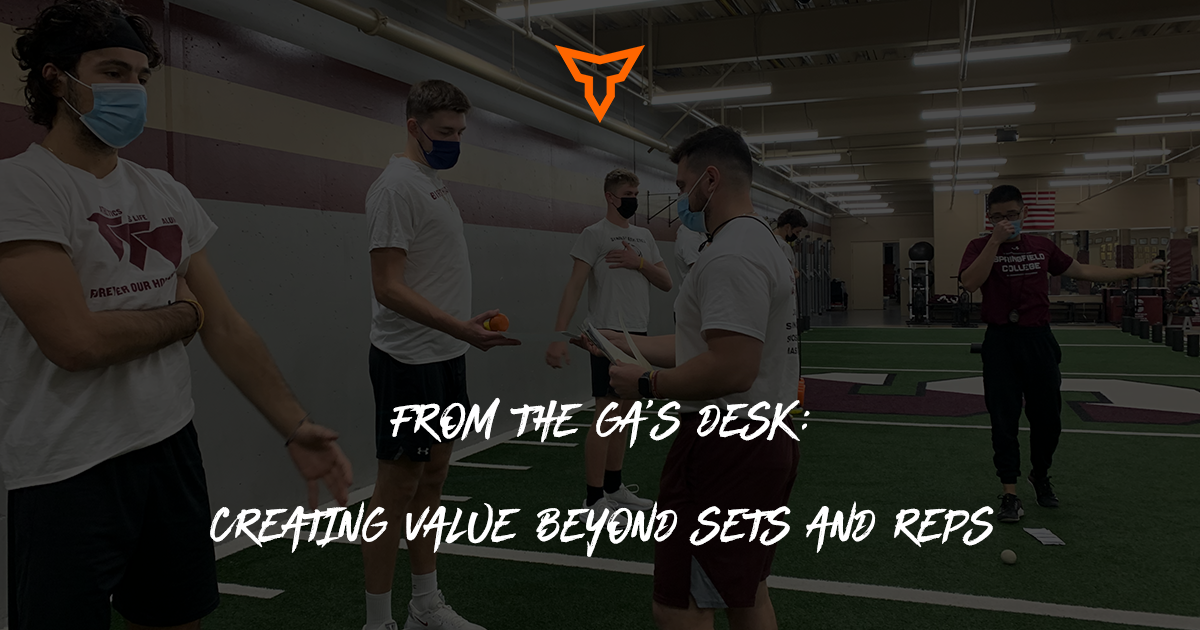Maximizing Off-Season Training: Strategies for Success
Author Rachel Newman is TeamBuildr's Assistant Marketing Manager and a Strength & Conditioning professional.
As a strength coach, one of my favorite times of the year is when the competitive season winds down. It’s a chance to reflect on the journey from Day 1 to the last game, evaluate your programming, and get excited to prepare your team for the next chapter. For many of us, this is also the time we spend the most with our athletes—building relationships, addressing weaknesses, and helping them recover and rebuild. The off-season is a golden opportunity for focused development, strategic planning, and fostering better communication with your team.
Having gone through off-seasons both with and without TeamBuildr, I’ve seen firsthand how the right tools can simplify the process and enhance athlete development. Features like the Workout Journal, Questionnaires, and Reporting streamline off-season management in ways that help me focus more on coaching and less on logistics. Here’s how they’ve made a difference:
1. The Journal: Reflection and Accountability
I think the Workout Journal is one of the most underutilized gems for helping coaches and athletes reflect on their training. This tool allows athletes to log their thoughts on exercises, upload videos when they’re away on breaks, and give feedback to coaches.
Why It Matters in the Off-Season:
The standard I set for athletes is that it’s not enough just to do the exercise, you need to have an outrageous intent when you perform it - doesn’t matter the percentage I have programmed or whether it’s a Power Clean or TIYW’s. Reflection connects effort to outcomes. Notes on lifts provide insights into energy levels, recovery, and areas for adjustment, giving athletes a sense of ownership over their development.
How to Use it Effectively:
Within notes on prescribed exercises, I would typically provide a prompt like “Submit a video of one of your sets” or “Let me know how many reps are left in the tank on the last set”. These logs help ensure they’re not just completing the workout but performing with quality.
The journal feature when they are on campus is just another way to help me as a coach. Listen, when I had a room full of 40+ lacrosse players, I can’t honestly say I had my eyes on absolutely everything. Call me a bad coach if you want, I don’t have eyes on the back of my head. I’d get stuck in a rack coaching one of the first years, or I’d be trying to hurry another group along through a workout, or I’d be messing around with the Bluetooth on a VBT device, we’ve all been there. On campus, it’s a simple way to manage adjustments: “Switch out the barbell bench for dumbbells next week” goes in the journal, not in my memory.
2. Questionnaires: Gathering Qualitative Data to Individualize Training
The Questionnaire Feature is a simple yet powerful tool to assess athlete readiness and tailor training programs to individual needs. Now a big note on this is that it is NOT a replacement to building a relationship with your athletes. I wouldn’t even implement Questionnaires until you are at a point with the team where they feel they can be honest in completing them and you are at a point where you can implement action with whatever feedback they give you. This tool ensures that your athletes’ voices are heard/documented, and their training programs remain dynamic and responsive to their needs.
Why Use Questionnaires in the Off-Season:
- Evaluate Readiness: I think “monitoring readiness” is a bit of a buzzword, but at the end of the day it’s the best way to describe the questionnaires that you can build out within TeamBuildr. Daily or weekly questionnaires help you gauge an athlete’s recovery status, mental state, and physical readiness for training.
- Build Trust: Regular check-ins show athletes you care about their well-being, creating a stronger coach-athlete bond, if you have a number of teams you are responsible for, it is a great way to make sure you are staying on top of what individual athletes need and it’s a way to house all of that feedback in one place. Paired with a tool like the Load Monitoring Dashboard in the Sport Science Hub, you can weigh qualitative feedback and quantitative data for a more comprehensive look at readiness.
How to Implement It:
- Create Simple Surveys: Use 3-5 targeted questions, such as:
How well did you sleep last night?
How sore are you feeling today?
What’s your current energy level?
These surveys can be as detailed as you want them to be, but I would keep in mind that they are meant to guide the conversation and examine overall trends rather than being the catch-all for what an athlete has going on in their life.
- Analyze Responses: Use their feedback to inform recovery protocol and modification decisions. I want to emphasize my first point - this is not a replacement for quality coaching and you need to be able to implement change or be ready to have conversations with athletes and other stakeholders with the responses you receive.
- Educate Athletes: Explain the “why” behind the questions to encourage honest and consistent responses. Why do I care about sleep? Why do I care about nutrition? Why do I care about your stress levels? Again, you need to be at the point in your relationship with a team where there is already an established level of trust to answer questions honestly and they know you will be responsive to them.
3. Utilizing the Reporting Section
Between auditing my programs, checking athlete progress, and presenting to coaches, this period presented lots of opportunities to create reports and those lovely dashboards. The Reporting Section in TeamBuildr was the best and easiest way to get digestible information to coaches and give insights into performance, attendance, and training trends. Leveraging these reports during the off-season can help you make informed decisions and identify areas of improvement for both individuals and the team as a whole.
Track Progress Over Time: The Progress Report, the Max Report, and the Comparision Report were my mainstays for tracking athlete progress. The point of these reports is to give an overview - they work in conjunction with each other to help point out, both positive and negative, training trends for athletes. Having this information in one place to dive deeper into athlete or team training data saves time. The off-season is long, so having a way to work efficiently on the programming and auditing side gets me back to working with my athletes and tracking down coaches for schedule changes.
Tying It All Together - Using Reporting:
- My typical setup post-lift looked like something like this:
For daily auditing, I would look at the Workout Results Report, and make changes based on questionnaire responses and my athlete journal notes. Easy-peasy.
- You can certainly export data for your custom reporting dashboards, which is one of the beauties of TeamBuildr’s reporting - it doesn’t tell you how to present your data but simply helps you do your job better and faster.
Conclusion:
The off-season is where real progress happens. It’s the time to sharpen skills, strengthen relationships, and set the foundation for success. Tools like TeamBuildr make it easier to manage programming, track development, and communicate effectively, leaving more room for what matters most: coaching.
For me, the off-season isn’t just about preparation—it’s about reflection, improvement, and connection. With the right tools, the off-season becomes an opportunity to coach at your best and prepare your athletes for theirs.
Subscribe to our blog
Subscribe to receive the latest blog posts to your inbox every week.
Related posts

Compound Training for the Off Season Athlete

From the GA's Desk: Creating Value Beyond Sets and Reps

